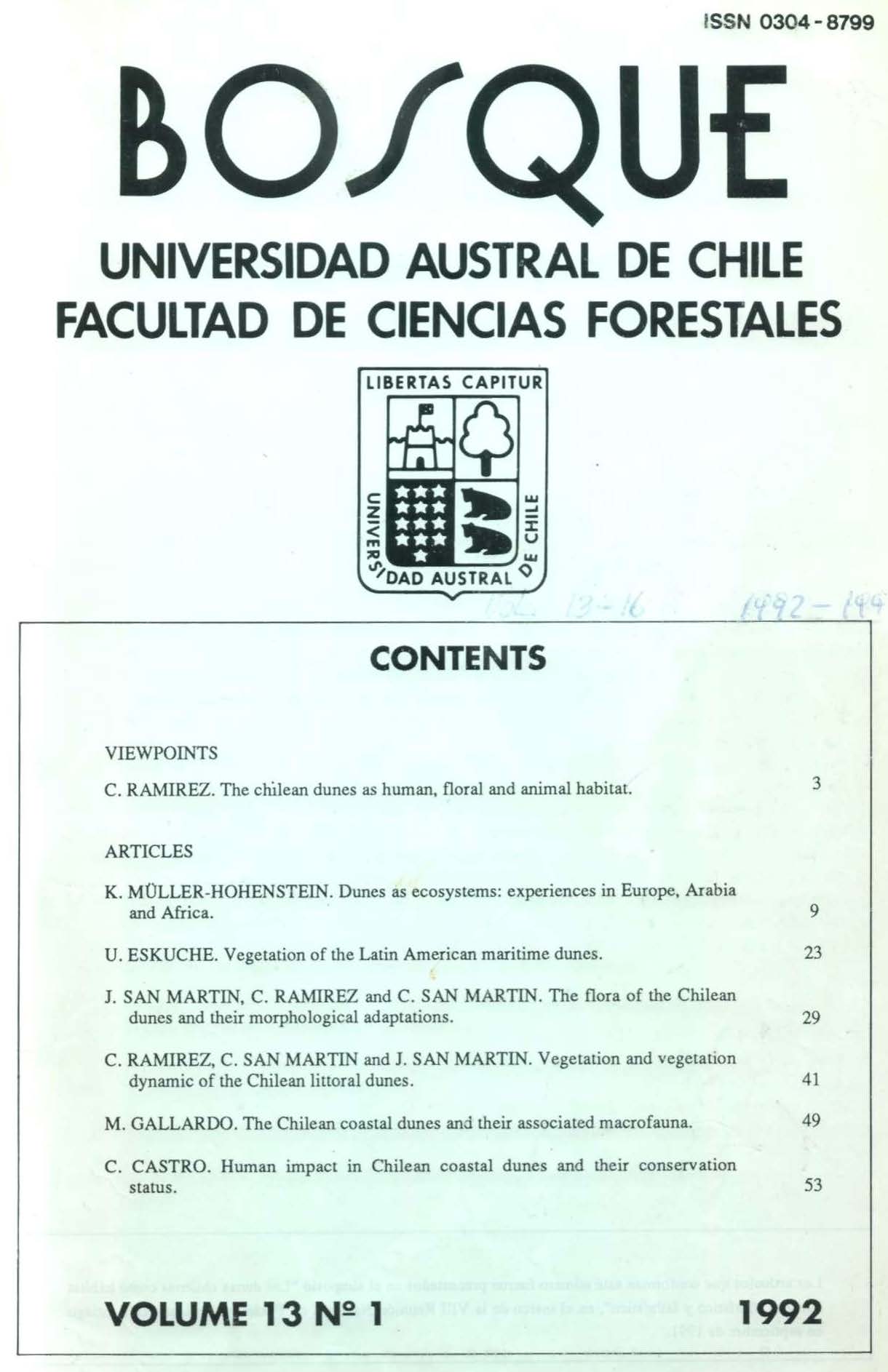La vegetación de las dunas marítimas de América Latina
Contenido principal del artículo
Resumen
La vegetación de dunas y playas arenosas vive bajo condiciones severas de acumulación y remoción de arena por oleaje y viento. Por esto, el tapiz vegetal arenícola de las costas es más vulnerable, pobre y uniforme, que la vegetación formada en equilibrio con el clima, suelo e influencia del hombre. Por otra parte, la línea costera de América Latina abarca regiones climáticas diferentes, desde templadas a tropicales y desde perhúmedas a peráridas. Recorre regiones tan distantes y diferentes en la historia de su flora como las costas atlánticas y las pacíficas. Resultan unidades de vegetación poco variadas florísticamente, donde en la línea costera prevalece la dirección latitudinal. En cambio, es notable la diferenciación de la vegetación de las costas con extensión meridional, de acuerdo a zonaciones climáticas, tanto en el litoral atlántico, como en el pacífico. En las dunas marítimas móviles de América Latina se conocen comunidades vegetales de las siguientes clases: Canavaletea maritimae: playas y dunas atlánticas del clima tropical desde el Caribe hasta el Brasil meridional. También en la costa pacífica tropical del Golfo de Tehuantepec; Panicetea racemosi: Dunas atlánticas con acumulación y remoción intensa de arena desde el clima subtropical perhúmedo del Brasil meridional, hasta la costa templada húmeda de Argentina (provincia de Buenos Aires-NE); Panico urvilleani-Sporoboletea rigentis: dunas atlánticas de la costa con clima templado subárido y árido. Desde el sur de la provincia de Buenos Aires al norte del Chubut; Ambrosietea chamissonis: desde las playas y dunas pacíficas de clima templado perhúmedo del sur, en 4 asociaciones del Polygonion sanguinariae, hasta el Norte Chico subtropical árido de Chile. Al norte de la costa pacífica tropical desde Baja California hasta Vancouver el Ambrosion umbellatae. Urge la creación de reservas para proteger las biocenosis de las dunas, económicamente sin valor, pero de tanto interés científico, de tanta belleza en su relieve, flora y fauna.

